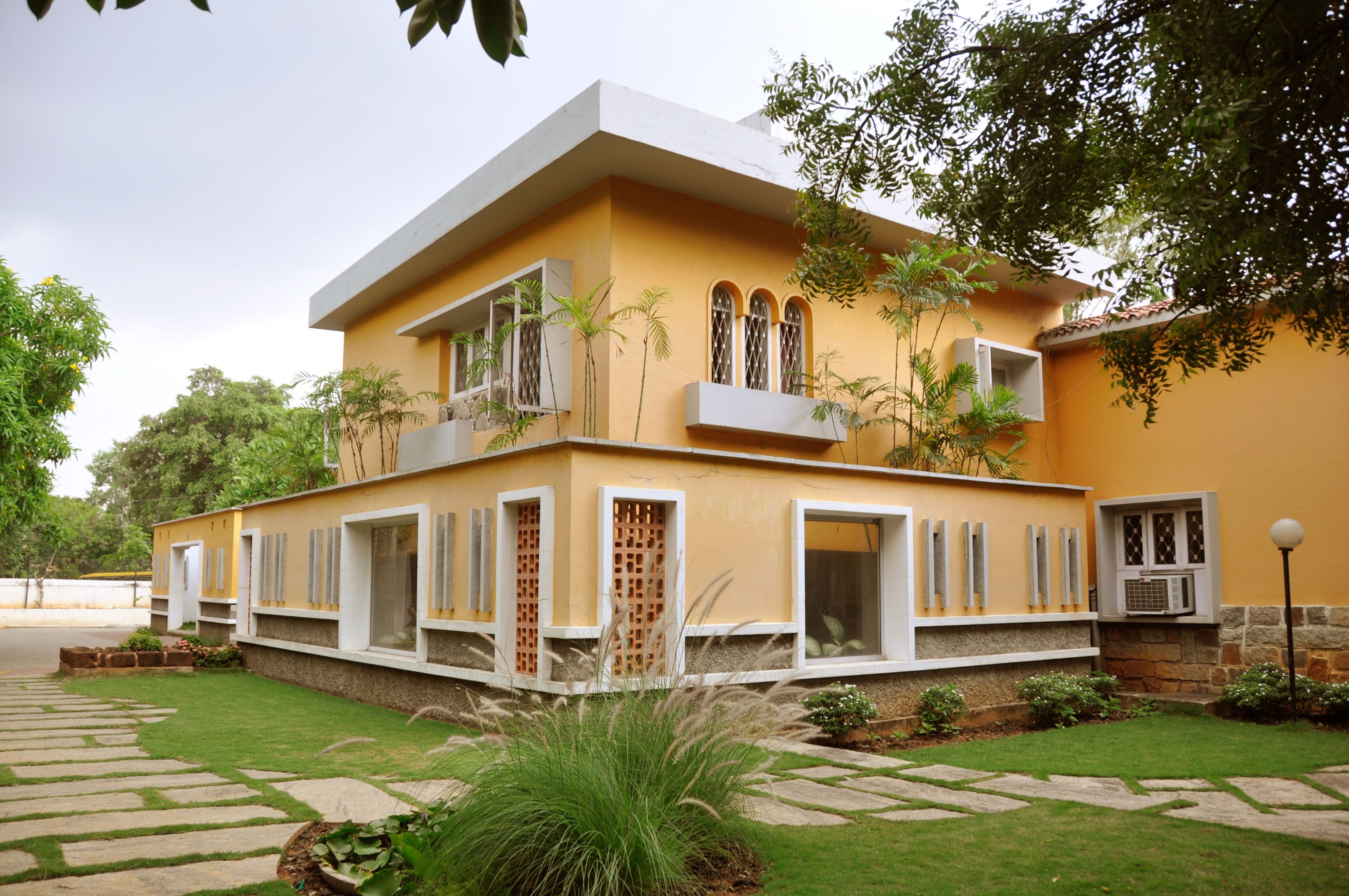
Perhaps the most important achievement of Nandakumar’s design is the informal but graded transitions across interior space and the variety of outdoor settings- garden, pergola, amphitheatre. Nandakumar has woven all spaces together in such a way that they are remembered as distinct but also tightly connected. And the architecture? Well, you don’t remember the building as an isolated object at all, except for snatches of elegant, yellow-painted walls with the white coping bands that were part of the old house design. The reticence of the architecture allows the garden to become the dominant image. Since a garden is occupied and not only viewed at a distance from outside, the small campus succeeds very quickly in making you feel welcome, at home and also stimulated.

Some of the stimulation comes from the unexpected sequences inside the building which perhaps have to do with the way a new use is fitted into an old arrangement of spaces. The reception lobby opens up suddenly into a much larger space, one with a wall-hugging staircase leading up to another room. This multipurpose space leads through a short passage to a children’s bookshop which itself peeks out at the garden behind the building and adjoining the outdoor amphitheatre. Deeper inside the building is the biggest surprise- a darkish room you descend a few steps below ground. A strip of window runs along the backrest of built-in seating on the periphery of the room as you look out at the garden outside- only you are surprised at how close the sill level is to the grass in the garden outside! The same garden you walked across earlier, suddenly looks different. With touches like this, it is not surprising that the campus is always alive with activity.












One Response
Dear Himanshu Sir,
Hi! Capt Sudhir here. I read about the wonderful thought behind ‘Saptaparani’ and I feel its a wonderful thing to give this kind of opportunity to children. May be ,I am tempted to ask one more thing and that is whether in the same premise can someone give a series of informative lectures or presentations to these children about Indian culture and day to day sanskars till they reach college level ? It may help them to remain cautiously away from western influence and visualise the future and strength of our indian culture.
This is just a wild thought which came to my mind and if children of quite sensitive age are going to visit this place regularly, it may help them as well as their parents too.
I know you are not directly related but probably you may be in touch with the people there hence this thought.
Warm regards
Capt Sudhir,
Architect
Associate Professor at Aayojan,Pune